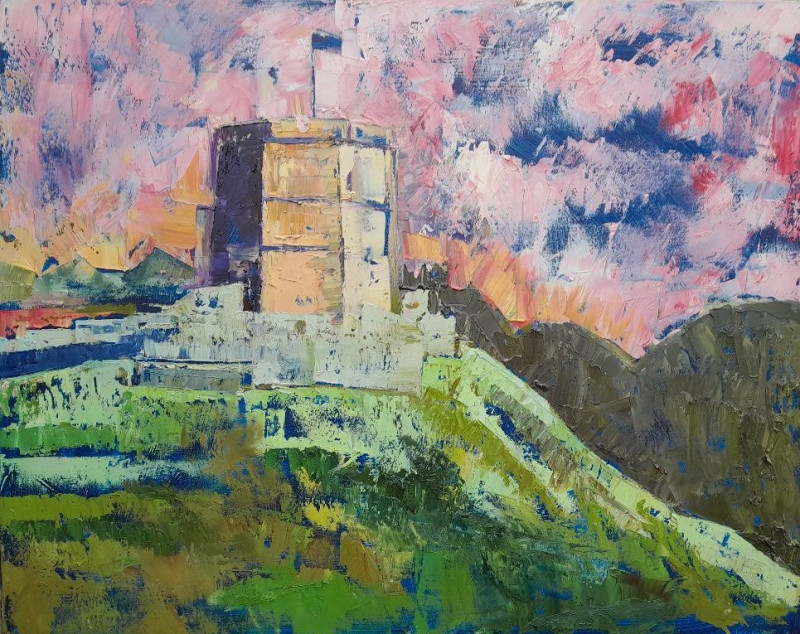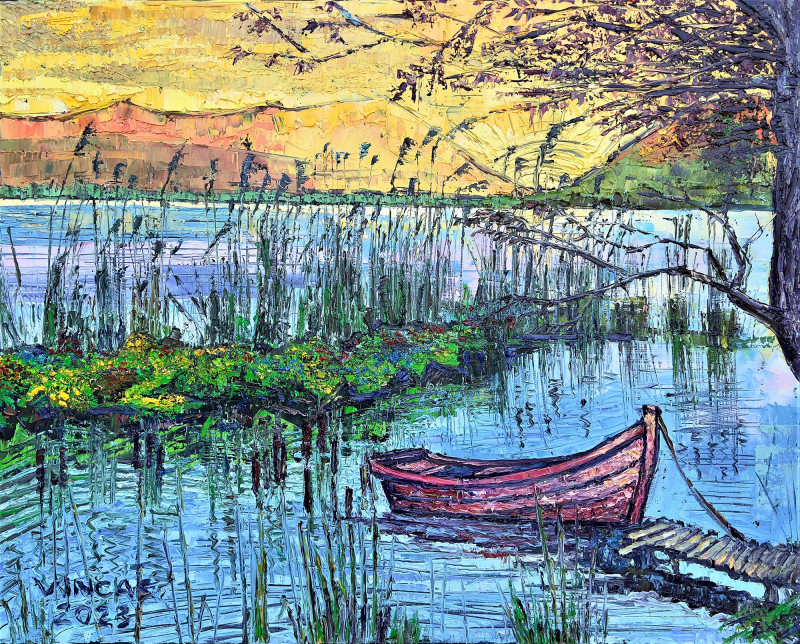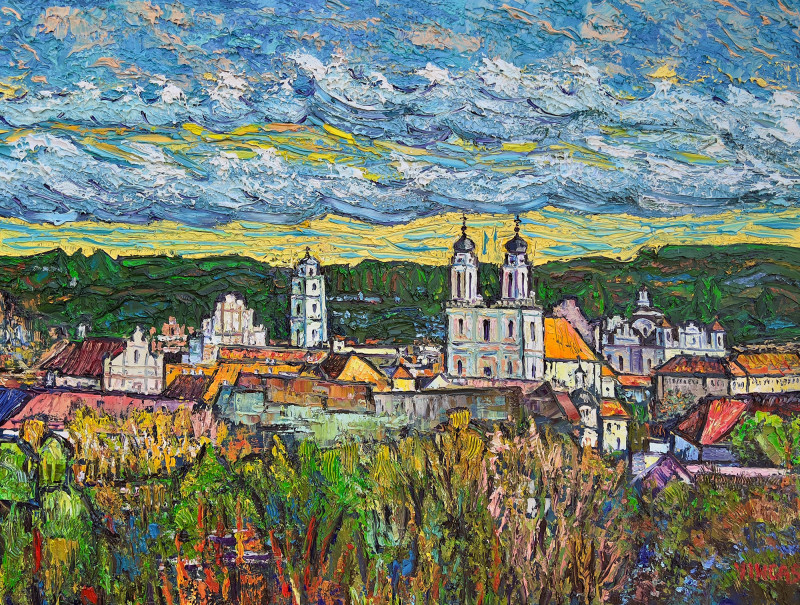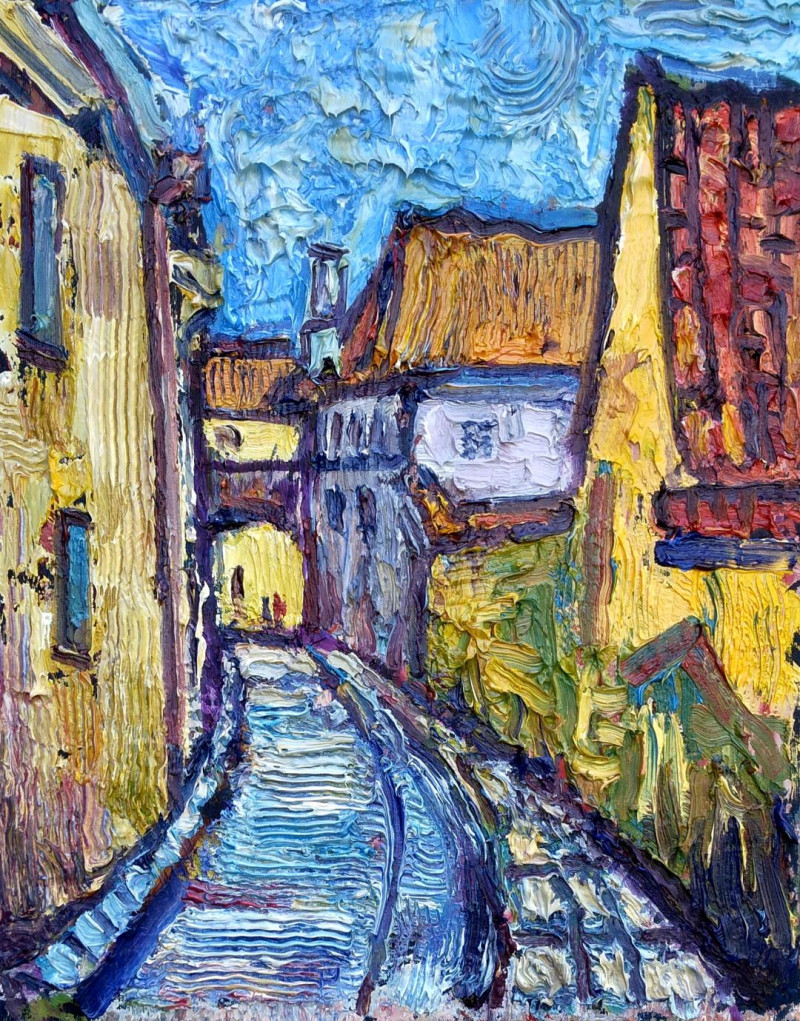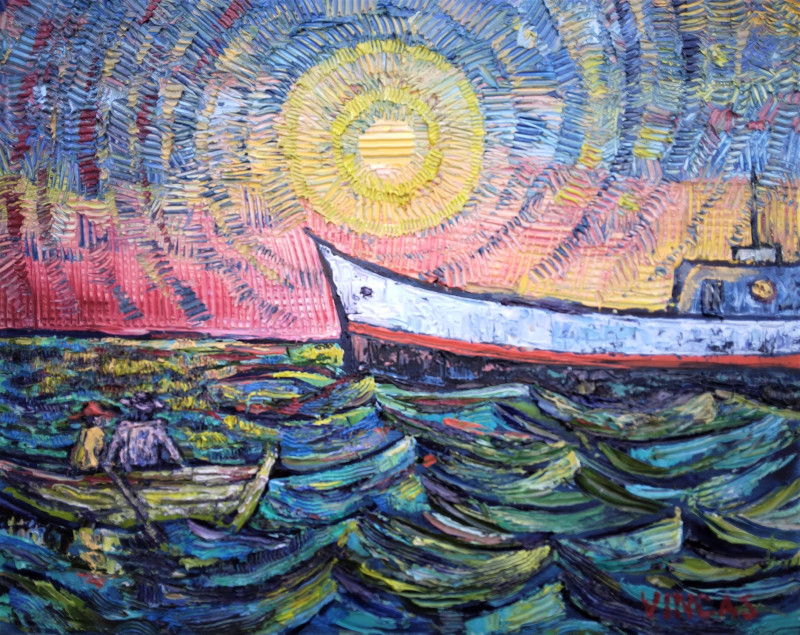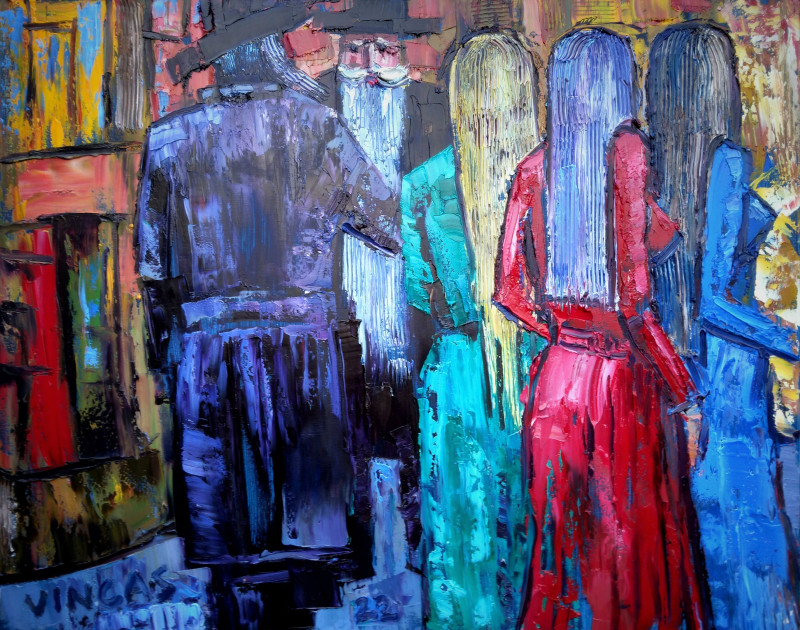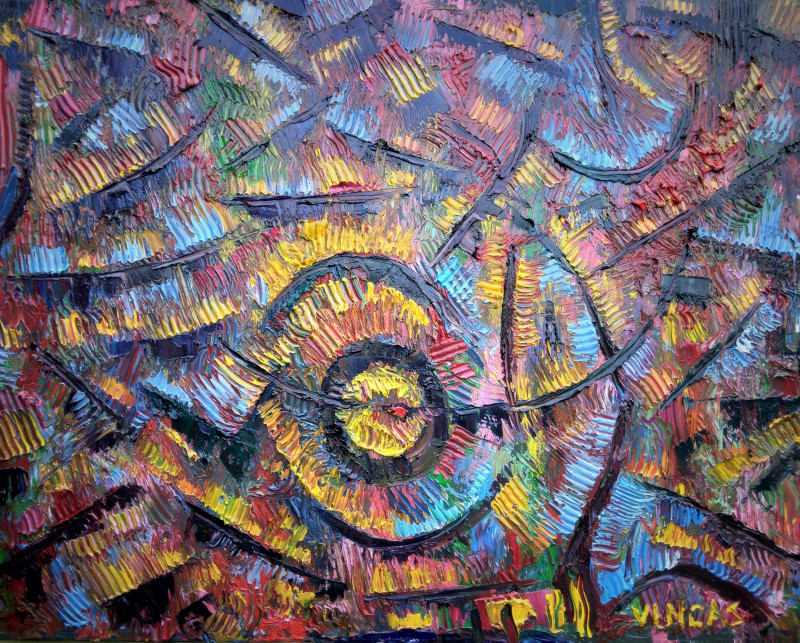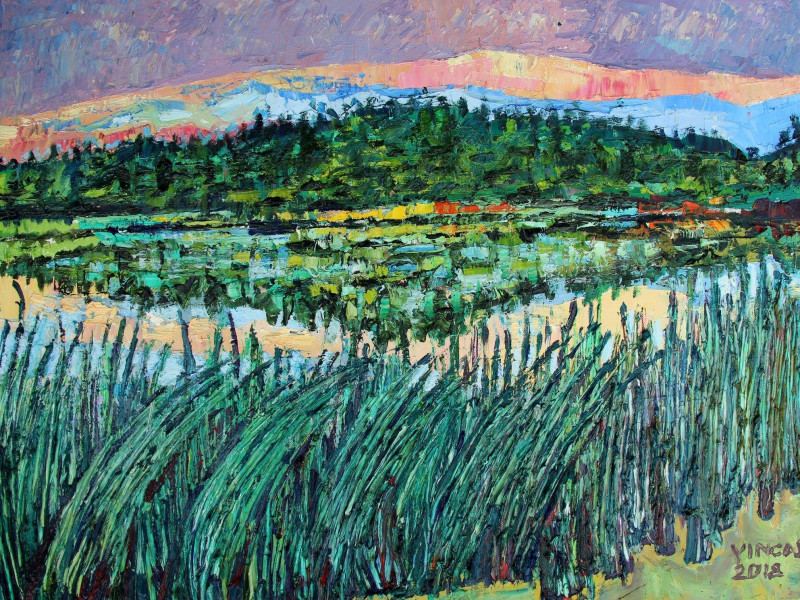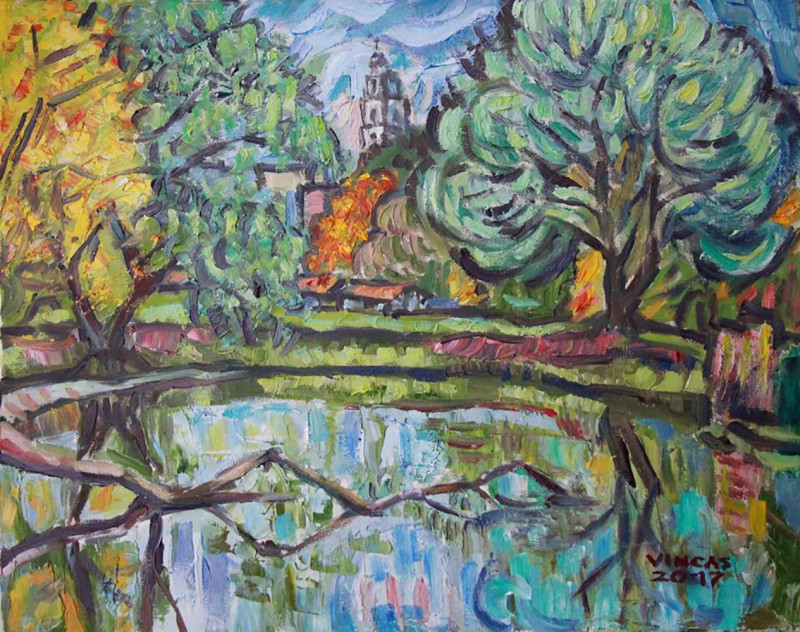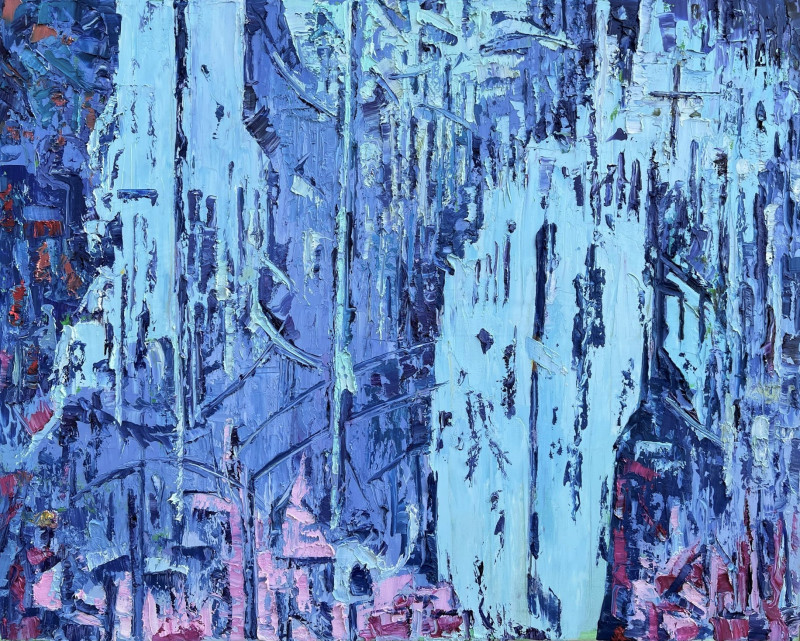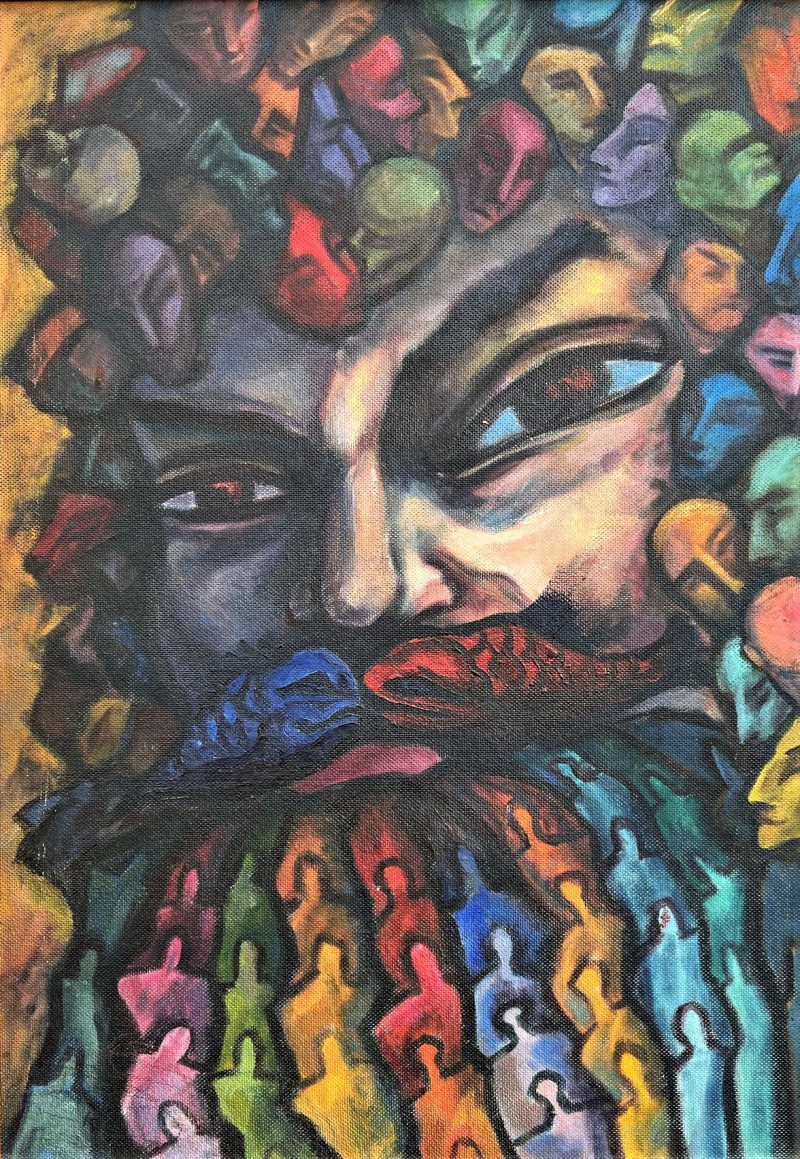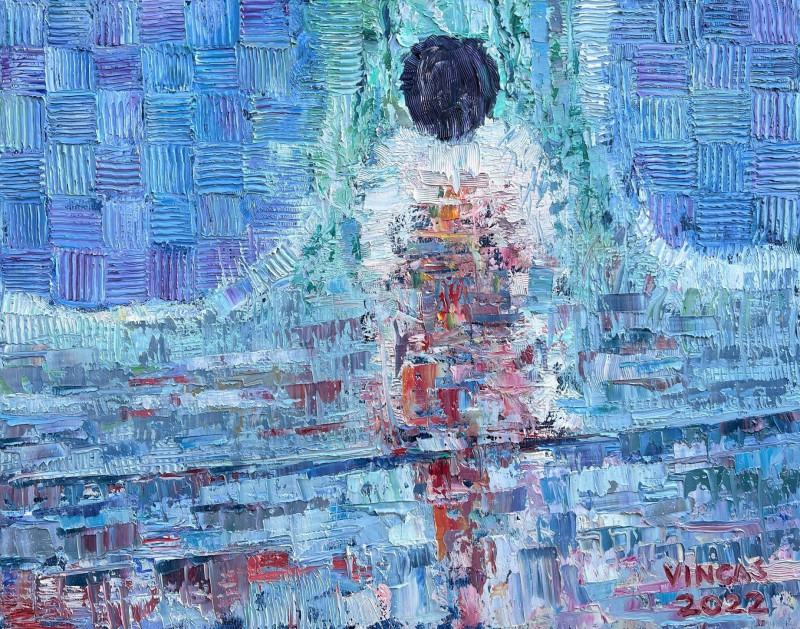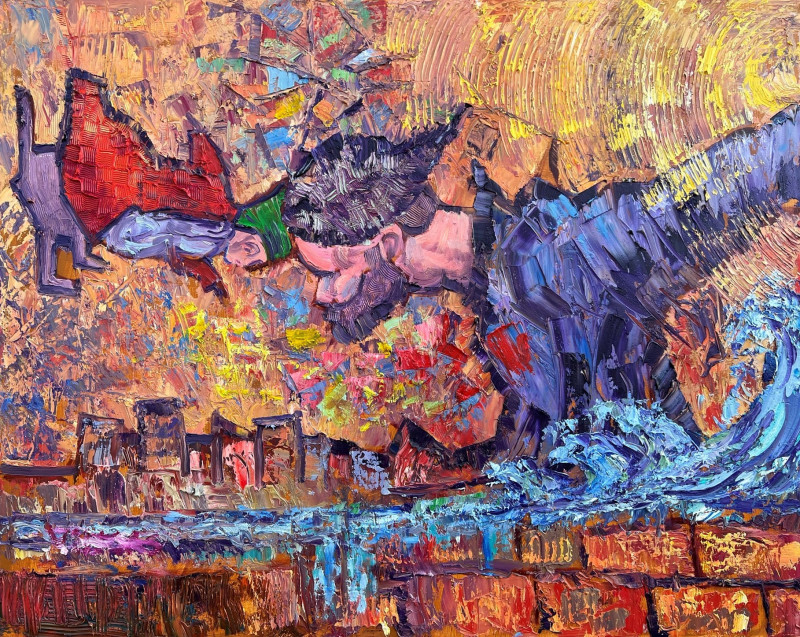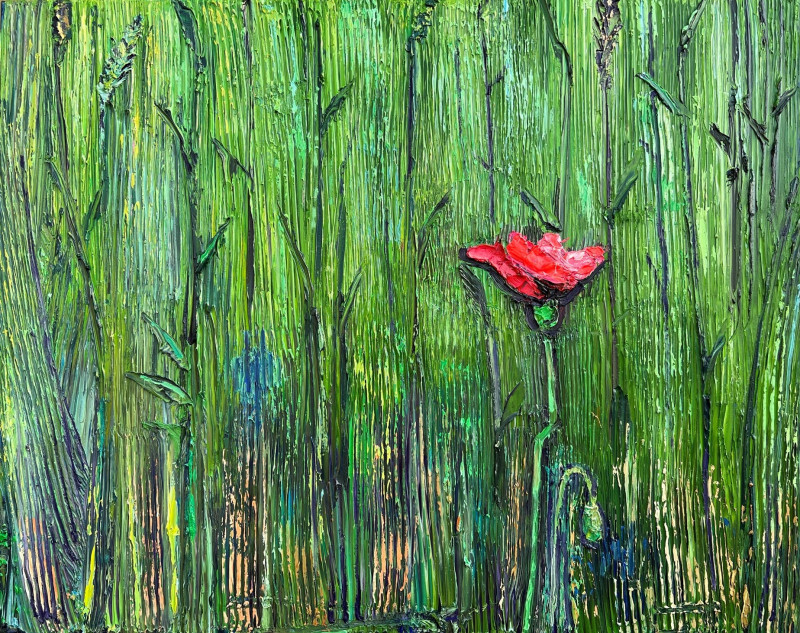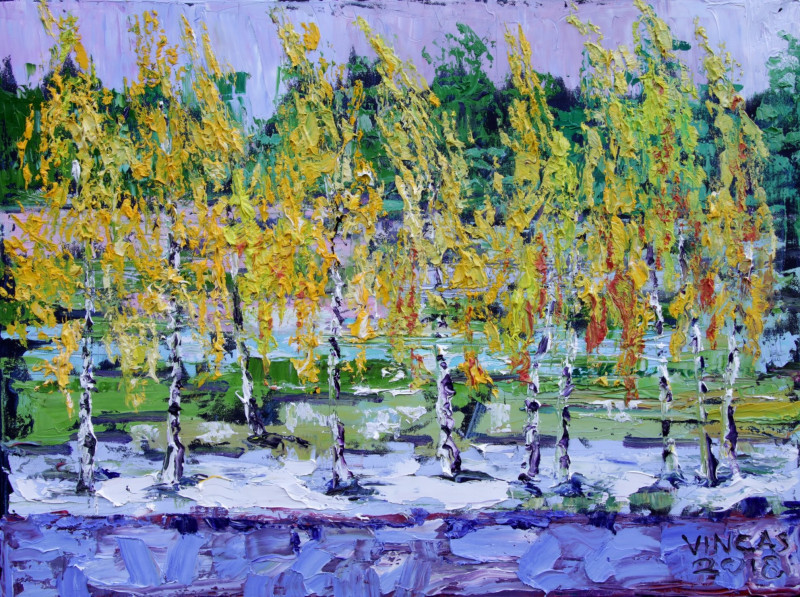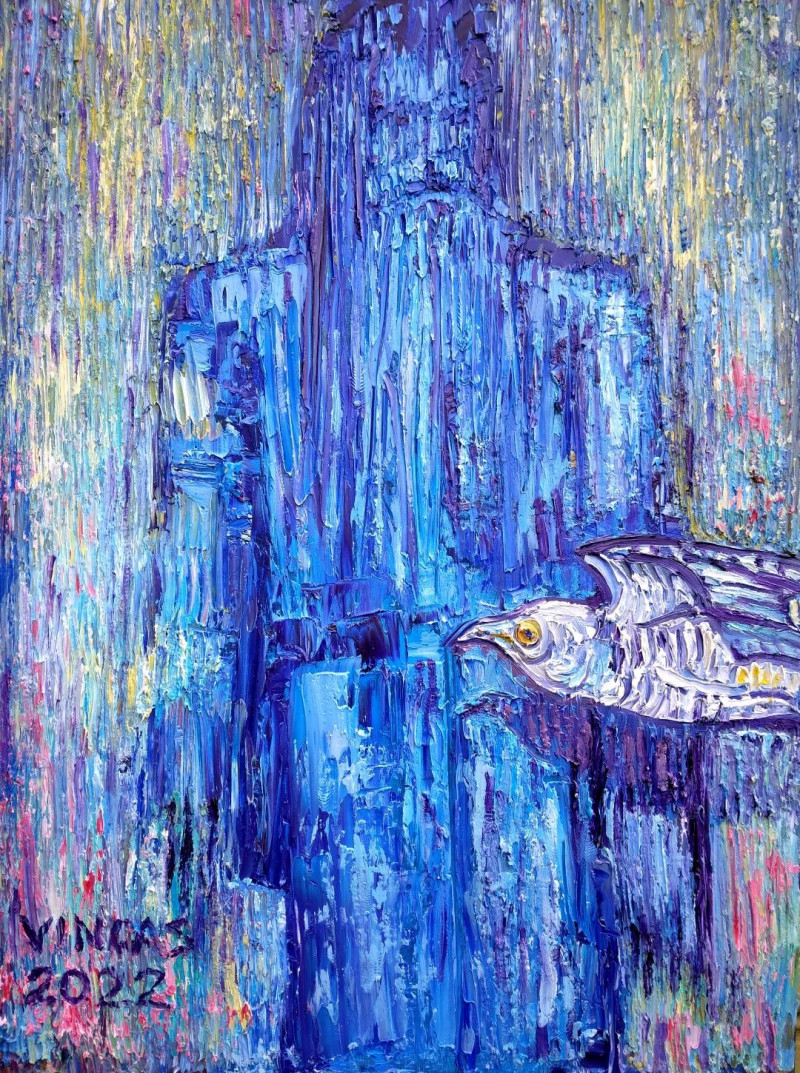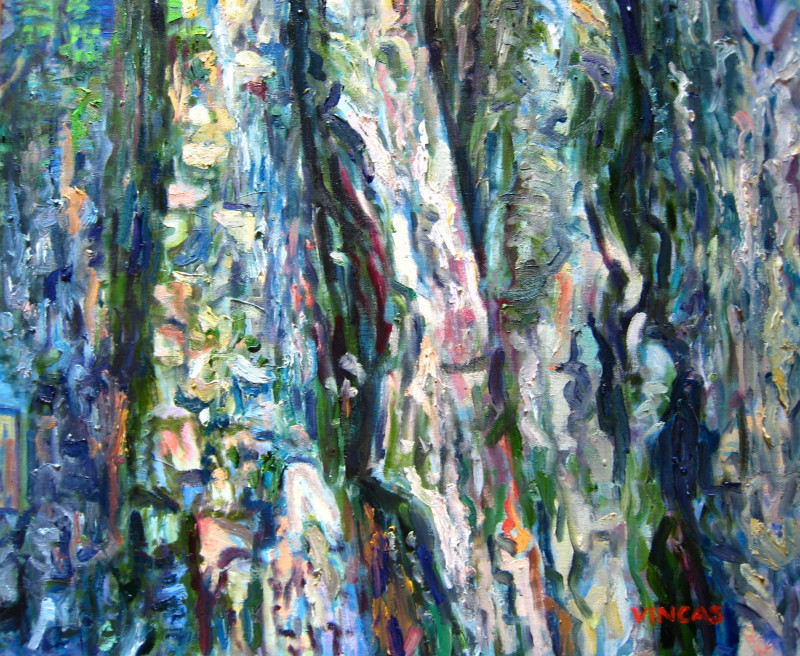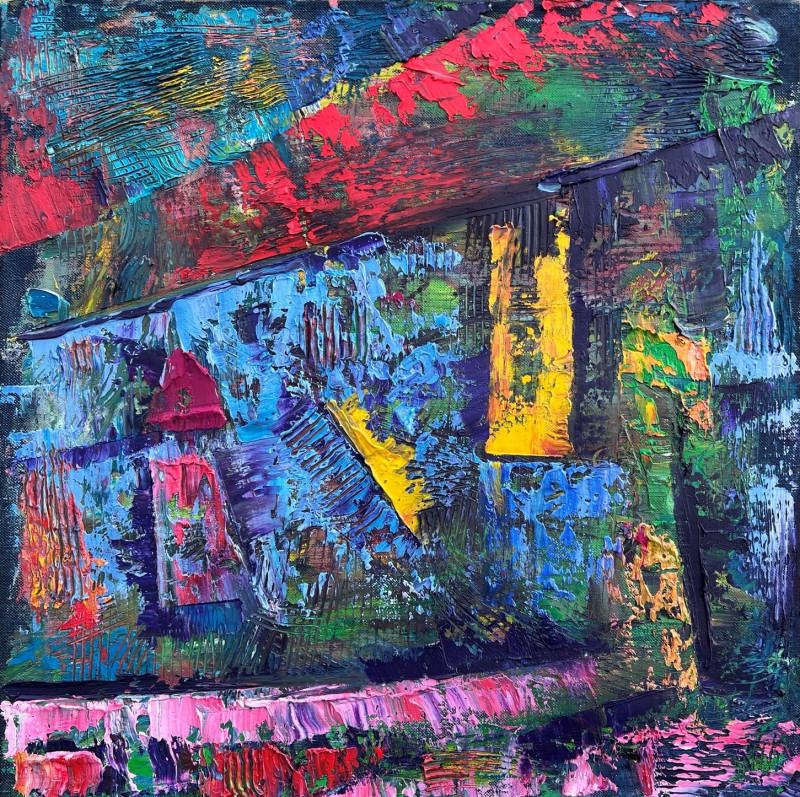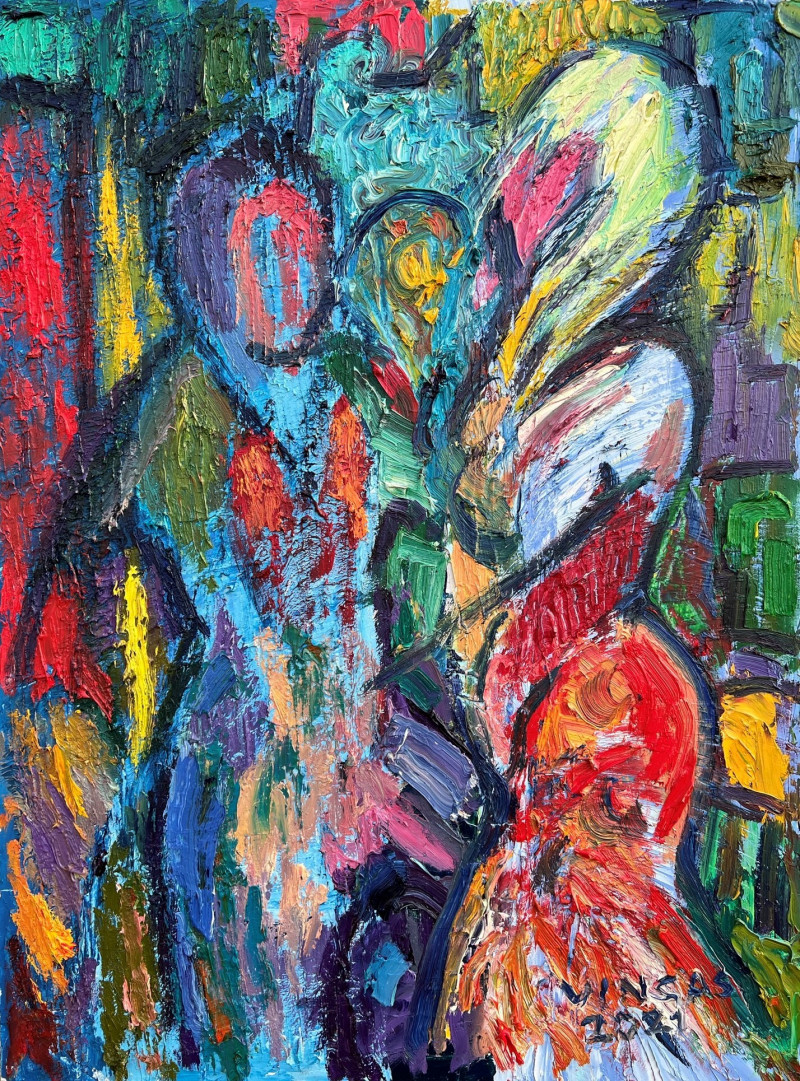Authors Artworks
About the author
"I have been drawing since I was a child. My first teacher was my father. A good teacher. He used to repeat the rule - "Don't waste paper, don't waste paints!". It helps to get free.
From the first grade he put me in the art class. But the real voluntary painting started at the age of 15, when I read all Henri Perouche's books on the life of the Impressionists. Irving Stone's book "The Lust of Life", about the life of Vincent Van Gogh, was a particular inspiration. I couldn't stop.
I went through the whole "Academy" - academic drawing and painting studies - in the private studio of Vytautas Pečiukonis (Agnus Alegrus), a truly special artist and teacher. The door was open to me day and night," the painter introduces himself.
Vincas Andriušis says that, above all, painting must breathe. A work of art must be alive, not tortured. So, naturally, it has to be done at a fast pace, in the same day, while the emotion is alive, while the urge is alive, while the inspiration is overwhelming. As the artist himself says, before the mind can intervene. The Impressionists and Expressionists who inspire his work would agree with this statement. And while it would seem that a painting that has been painted for longer is more valuable, the artist himself thinks the opposite - that the greatest mastery is to paint quickly.
The change in the artist's technique - painting with a spatula - is perfect for this purpose, freeing me from too much detail, giving me more freedom. Moreover, working with a trowel makes it easier to give relief to the paintings, so that the paintings change according to the lighting.
Naturally, the artist likes to work from life, and most of his landscapes are painted in nature. These working conditions also encourage the artist to work quickly, as the lighting is constantly changing and the artist must not play around. The artist tries to convey the vibrations of nature with flickering brushstrokes, which sometimes get busy and begin to swirl in eddies, just like in the paintings of Van Gogh, whom he admires. And the bright colours give the works not only liveliness but also a dramatic sound.

